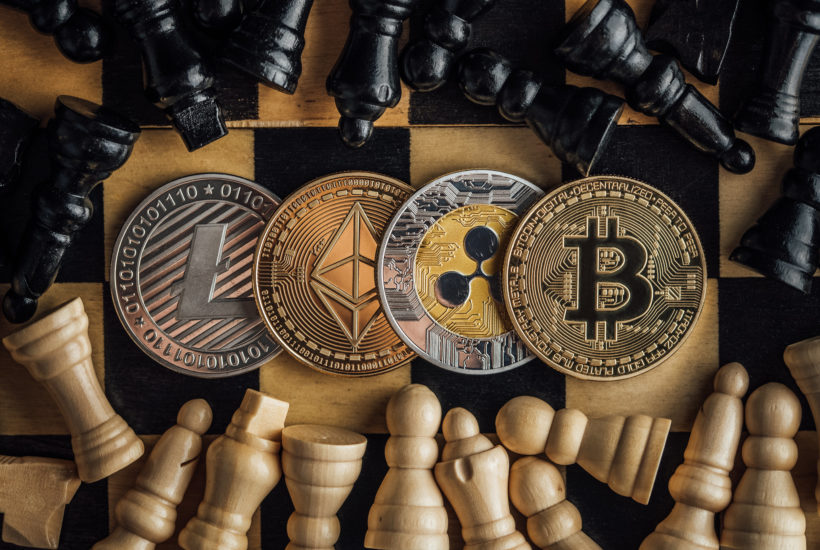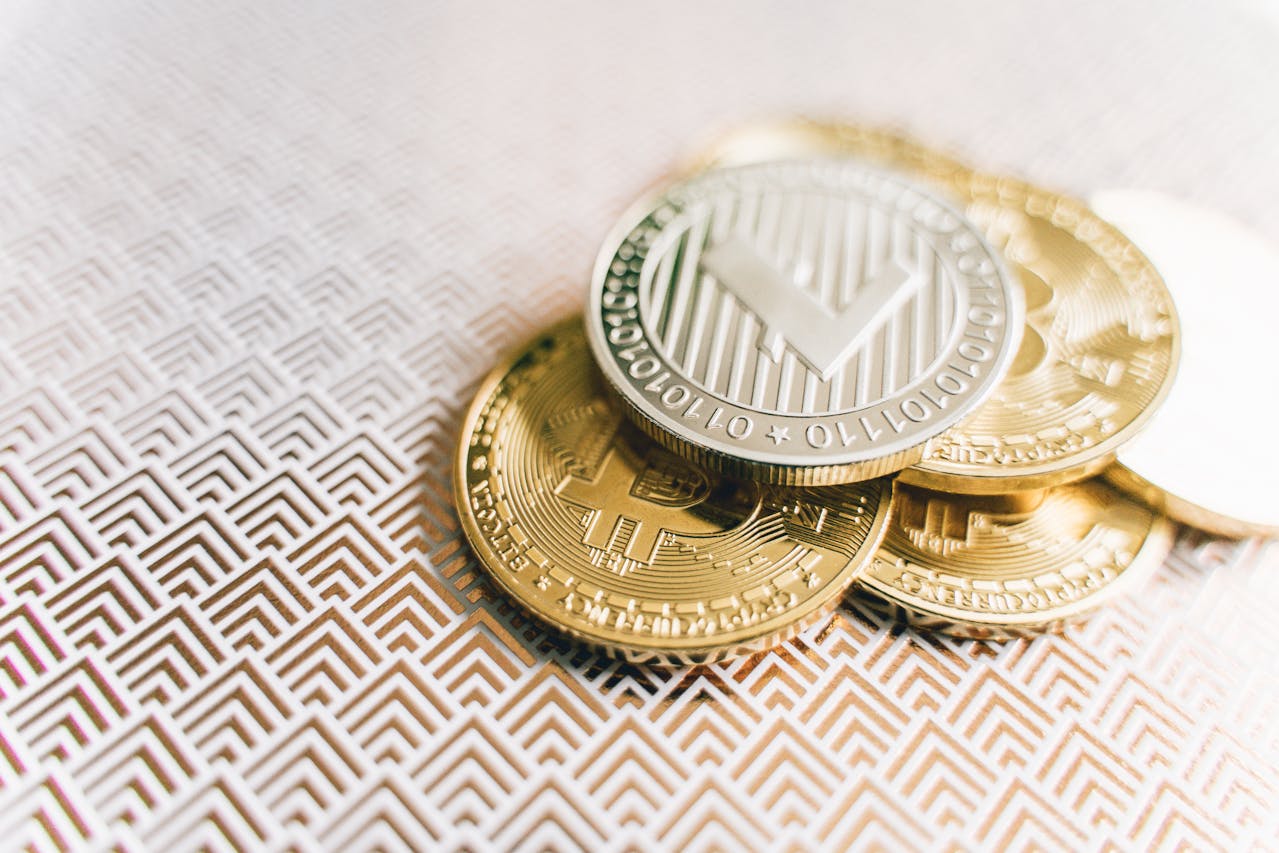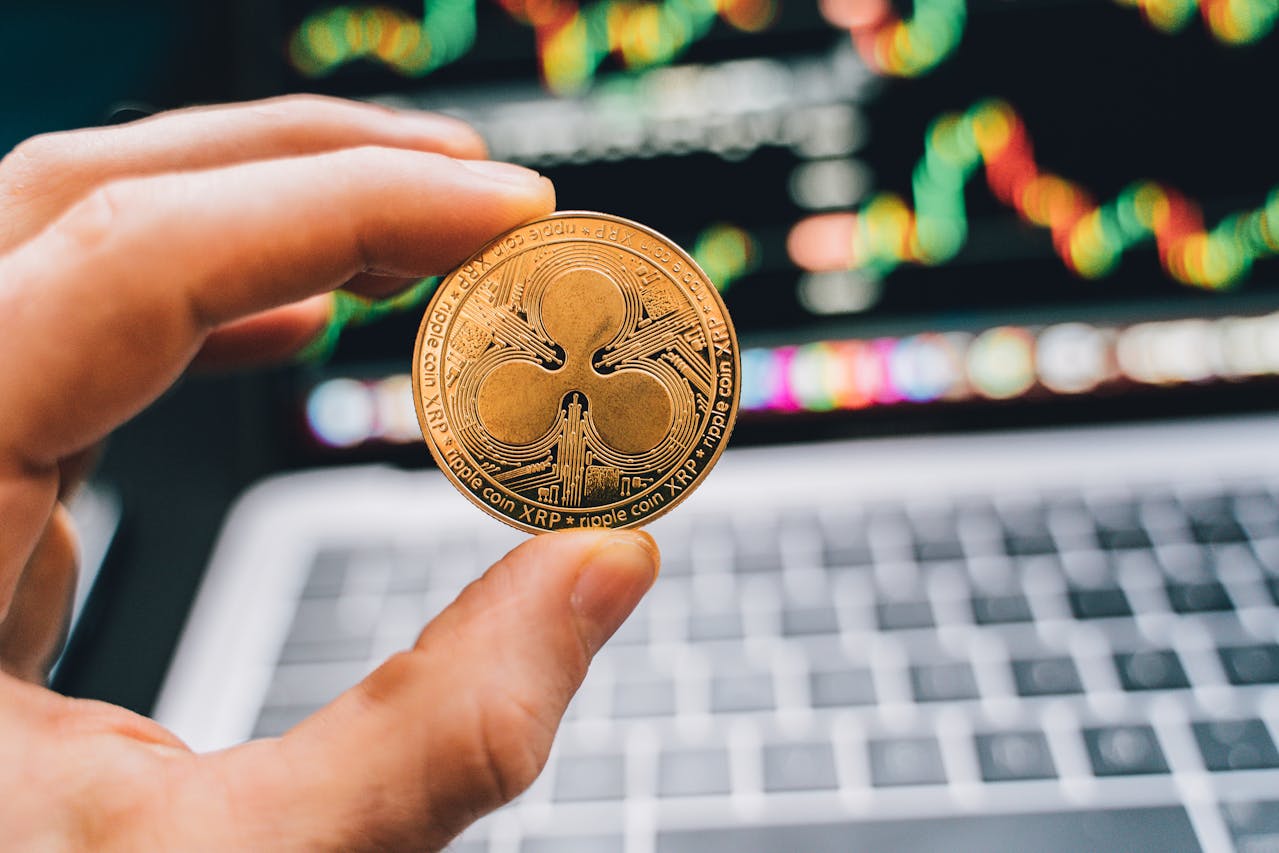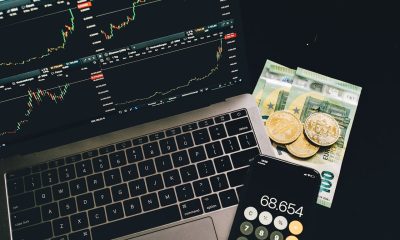Crypto
A Year in Review: How Was 2021 for the Crypto Sector
The annual report by Iconium, the first Italian company to invest in digital assets, notes that 2021 was a great year for the crypto sector. despite the fact that the price of Bitcoin has increased by about 150% to date compared to the beginning of the year, its dominance has almost halved. At the same time the dominance of Ethereum has doubled, that of Binance has increased by 6 times.

2021 was undoubtedly one of the most exciting years for the blockchain and crypto sector. In terms of total capitalization, the market reached $1 trillion for the first time, surpassing $3 trillion in November, before retracing in December to around $2.2 trillion.
Wanting to compare with other asset classes, the performance of Bitcoin and other cryptos has been astonishing: the ROI achieved over the past year was +152% for Bitcoin and +179% for the CIX 100 index, referring to the top 100 cryptos by market capitalization, respectively. Crypto assets have thus earned the top spots in the rankings in terms of return, clearly detaching the stock market and commodities.
In the rest of the report, the main drivers of this growth will be analyzed, but it is essential to understand first of all how the market has changed over the last year.
One of the most interesting data concerns the evolution of Bitcoin’s dominance, an indicator that shows how strong the capitalization of an asset is compared to that of other cryptos.
In fact, despite the fact that to date the price of Bitcoin has increased by about 150% compared to the beginning of the year, its dominance has almost halved.
At the same time the dominance of Ethereum has doubled, that of Binance has increased 6 times and new altcoins such as Avalanche and Solana have debuted on the market with amazing performances. Thus, looking at the evolution of total market capitalization, we can say that 2021 was certainly a favorable year for altcoins.
As a result, the composition of the market has changed radically, populating itself with numerous cryptos, whose dominance, to date, has almost doubled compared to 2020.
Read more on the subject and find the latest business headlines with our companion app Born2Invest
The rate of adoption
According to TripleA’s “Global Cryptocurrency adoption” analysis, the global crypto adoption rate in 2021 will average 3.9%. There are nearly 300 million users worldwide and there are already over 18,000 companies accepting crypto as a payment method.
A significant difference emerges regarding the use of crypto in developed countries compared to developing countries: while in developed countries crypto is mainly used in centralized services such as Exchange and DeFi (Decentralized Finance) applications, in emerging countries it is mainly used on P2P platforms.
The next twelve months will clarify whether this type of platform will continue to drive the process of crypto adoption, or whether it will give way to new models yet to be discovered. What is certain is that in the last year, crypto adoption has skyrocketed (+880%, according to ChainAnalysis’ 2021 Report) and we are undoubtedly facing a global trend.
USA: Millennial millionaires and their investments
A CNBC survey of U.S. investors with assets over $1 million found that 83% of respondents belonging to the Millennial generation have invested in crypto. Moreover, for 53% of them, digital assets make up more than half of their portfolio.
This trend is expected to continue in the future: 48% of Millennial millionaires said they plan to increase their investments in crypto over the next year, while only 6% of them plan to reduce their investments.
What emerges very clearly, however, is the generation gap: while most Millennials have already invested at least half of their assets in crypto, only 25% of Generation X own digital assets, while for the next generations the ownership rate drops dramatically, to around 4%.
If institutional investors want to remain attractive to new generations, they will inevitably have to revise their strategic vision on this type of asset.
Bitcoin: new highs
After a 150% increase from its value at the beginning of the year and a new all-time high of $69,044 on November 10, 2021, the price of Bitcoin is now $49,282.
High inflation, low confidence in government systems, and a booming commodities market bode well for gold’s appreciation, but it seems as if the gold rush has turned into a Bitcoin rush: ten years ago an ounce of gold was worth more than 400 BTC. Today it is worth 0.04 BTC.
Easier access and the entry of numerous institutional players in the sector have made investors increasingly comfortable with “digital gold”, so much so that, despite the extraordinary performance recorded by the altcoins, it is difficult to imagine a scenario in which Bitcoin could lose its leading role.
A few events, in particular, have had a strong media resonance, helping to make the entire asset class and the underlying technology even more popular:
In September 2021, El Salvador became the first country to accept Bitcoin as legal tender, strongly incentivizing entry into the world of finance by the 70% of the population that still could not access traditional financial services
Microstrategy was the first publicly-traded company to go “all-in” on Bitcoin. To date, the company holds about 121,044 BTC, totaling about $3.57 billion, purchased at an average price of about $29,534 per BTC
In late October 2021, Facebook changed its name to Meta, thus declaring its entry into the Metaverse. The move was then mimicked in December 2021 by Jack Dorsey’s financial services and digital payments company, Square, which changed its name to Block, emphasizing the growing importance of blockchain within the platform.
The evolution of Layer 1
Looking at the flows being diverted to protocols on blockchain gives a sense of how disruptive 2021 has been.
Iconium 2021 3-TVL DominanceIn particular, it may be useful to consider TVL (Total Value Locked), which, as the name suggests, indicates the total amount of liquidity deposited in crypto protocols. On the one hand, the TVL of the market has undergone exponential growth, standing today at $230 billion (+1,300% in just one year!).
On the other hand, also with reference to this indicator, the composition of the market has been completely disrupted by the exponential growth of a number of chains that, only a year ago, made up a total of less than 3% of the LTV.
The data doesn’t lie: competition from aspirants to the throne in the layer 1 segment is stronger than ever.
For Ethereum, 2021 has been a busy year. The explosive growth of DeFi and NFT has caused network congestion and an exponential increase in fees per transaction, leading users to seek cheaper and faster solutions and thus opening the door to new competitors.
Ethereum’s dominance in terms of TVL has dropped by a third, in favor of other protocols:
Binance Smart Chain: the founder of Binance, Changpeng Zhao, commonly known as “CZ”, was one of the first to ride this wave. In fact, he launched an EVM-compatible chain, i.e. a chain capable of executing smart contracts through the Ethereum Virtual Machine. This allowed all Binance users to easily access a cheaper DeFi experience than the one offered by Ethereum (at the expense of decentralization). The success of this chain was immediate and its TVL increased from $120 million in early 2021 to $17 billion today.
Terra: the exponential growth of UST, the success of Anchor and TeFi Autumn allowed Terra – of which Iconium was one of the first investors back in 2019 – to take the title of most successful chain on Cosmos, with an TVL that went from $50 million at the beginning of the year to $14 billion today.
Solana: officially launched in March 2021, in less than 9 months it has managed to attract more than $12 billion in TVL, thanks to its speed in terms of transaction execution.
Avalanche: with exponential growth in the second half of 2021, it is one of the most recent success stories. C-Chain’s integration with the most prestigious exchanges has allowed the chain to attract numerous users and high levels of liquidity in a very short time, so much so that the current TVL amounts to $19 billion.
NFT, Metaverse and Play-to-Earn
If 2021 had a title, it would probably be “NFT.” Let’s review some highlights on the subject:
Beeple, the stage name of digital artist Mike Winkelmann, sold his work “Everydays – The first 5000 days” in NFT format for $69 million at Christie’s auction house
Visa has purchased a CryptoPunk for $150,000
OpenSea, the world’s largest decentralized NFT marketplace, surpassed $10 billion in total sales volume
With the drop of his “Merging” collection on the Nifty Gateway centralized marketplace, digital artist Pak – who has been active in the digital art world for over two decades, but whose true identity is still unknown – set a world record for the highest sale by a living artist ($91 million).
We’ve witnessed the growth of an incredible marketplace that is becoming more complicated every day, with more and more professionals and institutions coming onto the scene.
But how to talk about NFT without spending a few words on the Metaverse?
Facebook has turned into Meta
Adidas has launched its own Metaverse on The Sandbox
Nike acquired Rtfkt (for the creation of sneakers and other “collectibles” for the Metaverse)
Disney has announced that it will use Disney+ as a platform for the Metaverse
Last April, Epic Games announced a $1 billion funding round to support future growth opportunities in the Metaverse
Unlike other tokens, which are interchangeable with each other, NFTs (Non-Fungible Tokens) derive their name from their uniqueness feature. This explains their functionality and connection with the Metaverse, the new virtual reality built on the web where new worlds come to life and where every single asset is potentially represented by an NFT.
NFT and Metaverse have one thing in common, which has experienced exponential growth as never before this year: gaming.
The case of Axie Infinity is incredible. With its Pokémon-inspired NFT game, the protocol has generated more than $500 million in revenue in the last three months alone. And if Axie’s growth is finally showing signs of abating, the play-to-earn trend that marked its debut is something we’ll be hearing about for a long time to come. In short, through certain mechanisms, this type of gaming allows players to earn tokens simply by playing. The capital raised by these platforms has reached unimaginable proportions and is now well positioned for a full cycle of evolution and development, regardless of whether the industry frenzy may subside over the next year.
Venture Capital a16z invested $150 million in Mythical Games, Enjin announced a $100 million gaming fund, FTX and Lightspeed invested $21 million in Faraway Games… all on the same day.
These are all signs that a new digital era is beginning. An era in which the digitization of the virtual environment, people and the entire economy will come to life.
Crypto/Web3 poised to reinvent the economy globally
In short, the crypto world, aka Web3 (the new blockchain-based internet), seems unstoppable.
In this new era, the centralized services typical of Web 2 enterprises are being overtaken by the decentralization and community governance features already experienced in Web 1, only to be recombined with new features, thus leading to the birth of a new internet, owned by builders and users and orchestrated through tokens.
Tokens encourage network actors to work together to pursue a common vision, resulting in network growth and token appreciation. In this way, the value created no longer falls into the hands of individual entities, but is spread throughout the community.
The implications are pervasive and will lead to one of the greatest revolutions of our time, perhaps even more significant than that attributable to the advent of the Internet.
Centralized Finance (CeFi) vs. Traditional Finance (TradFi)
It is now clear that banks, trading and asset management companies, and the other financial intermediaries that make up the so-called “TradFi” will further increase their presence in this sector in the short term. In fact, however, CeFi companies – brokerage platforms that allow users to execute transactions in the crypto world – have already gained a wide lead, and TradFi is likely to enter the scene very late. While these entities stall, CeFi ecosystems offer users the ability to earn interest on savings, borrow money quickly, spend it with a crypto debit card, and more.
The know-how resources and human capital available to institutional players are light years behind those of the large and fast-paced system of native crypto companies, which have been able to carve out a dominant position in an extremely tight timeframe.
In less than two and a half years, Genesis Global Trading has originated over $100 billion in crypto-denominated loans, while Coinbase Institutional has managed to attract 10 of the world’s top 100 hedge funds to its clients.
Man of the Year in the crypto sector
The network congestion and high fees experienced on Ethereum paved the way for unbridled competition on Layer 1. In this incredible rally, Do Kwon has undoubtedly won the top prize: his Terra protocol has indeed achieved an impressive 170x return since the beginning of 2021.
Of Korean descent, Do Kwon lived in Canada for years and then moved to California, where he earned a Bachelor’s degree in computer science from Stanford University. In 2016, he founded his first company, Anyfi, after starting out as a software engineer at Microsoft. Anyfi’s goal was to offer bandwidth to those without Internet access through the use of a mesh network. In his first experience as a founder, Kwon raised $1 million in grants and it was his experience with distributed networks that was his first contact with the crypto world.
He then founded Terraform Labs in 2018: at just 29 years old, Do Kwon has managed not only to create a completely open financial ecosystem, but also to build the most successful algorithmic stablecoin to date. UST, in fact, is now the fifth largest stablecoin and its run seems unstoppable.
Fundraising: institutional, public and… airdrop
According to Crypto Fund Research, crypto-assets managed by institutional investors seem to be growing exponentially and reaching new all-time highs all the time. We have seen a lot of investment in the Seed-Private phases: according to Dove Metrics there have been over 890 funding rounds totaling $18 billion! DeFi and NFT protocols account for more than half of the funding rounds, but the amounts invested are significantly lower.
By now we all know how vital the community is when it comes to crypto projects and, in most cases, we are in front of communities mainly participated by retail investors. As part of the Iconium 2021 5-ROUND Fundraisingfundraising, 2021 was definitely the year of IDOs. With IDOs (Initial DEX Offers), projects can raise capital by launching tokens on decentralized exchanges. The proliferation of launchpads that we have witnessed has allowed nascent projects to easily reach a wide audience of potential users/investors, who at the same time have welcomed the opportunity to invest small tickets in projects deemed promising, establishing a virtuous circle.
A second method for launching tokens on the market consists of airdrops, which play the dual role of increasing the popularity and visibility of the project with the general public, while at the same time diversifying the base of owners of the token itself.
Typically, to participate in an airdrop, a user must have a certain amount of assets in a public wallet at the time of the snapshot or be an “early adopter” of the protocol.
Uniswap pioneered this method of market entry. Subsequently, there have been many projects that have followed in its footsteps: among others, it is worth mentioning 1inch, Paraswap, ENS, DyDx, BOBA and so on.
What can we expect from 2022?
Bitcoin’s run looks like it could still have ample room for growth. One of the indicators currently most favorable to the bullish thesis is the MVRV (Market Value to Realized Value). Made popular by Coin Metrics, this indicator uses 2 variables: market capitalization and realized market capitalization. In short, when the index approaches 1.5, the asset is considered underpriced, while a value above 3 indicates a good time to sell. As of today, the indicator stands at 1.9.
Despite the acceleration of the past two years, trading in DeFi still amounts to less than 1% of the market capitalization of global banks. Although fierce inter-protocol competition has led to stagnant pricing for some of the major protocols, Ethereum transaction fees still remain very high, and discussions about technical and regulatory risks are commonplace, DeFi still manages to offer the best risk-reward opportunities when compared to the rest of today’s market. The possibility of seeing inflows into DeFi increase over the coming months is therefore still high.
While Ethereum will continue to be busy solving challenges related to its scalability and high fees, the proliferation of competitors in Layer 1 suggests that we are rapidly approaching a multi-chain future, which will allow users to benefit from less fragmented liquidity through simplified access to bridges.
NFT and Metaverse will continue to lead the crypto gaming industry and incumbent players will adopt this technology. We expect Ethereum to lose market share in this sector to NFT-centric blockchains, which are able to guarantee lower transaction fees. Given their nature as non-fungible and illiquid assets, it is complex to attribute a sector capitalization that can be trusted, but certainly, the size and scope of the NFT segment over the long term is set to write new all-time highs over the next year.
DAOs will become increasingly structured and will need to focus on treasury management and revenue sharing with token holders. However, we expect these DAO creation and management processes to be made more accessible by the introduction of new dedicated tools.
Access to the crypto world will also be easier for emerging countries and we expect more and more countries to follow in the footsteps of El Salvador by adopting cryptos as legal tender.
The demand for stablecoins will continue to grow, especially that of algorithmic stablecoins, which will be able to assert their dominance at the expense of FIAT collateralized stablecoins.
Many more publicly-traded companies will start investing not only in Bitcoin but also in altcoins, implementing a strategy to diversify their portfolios.
Year after year, season after season, we are more and more excited to be part of this industry and to support in our role the projects that will build, one “block” after another, the world of tomorrow.
__
(Featured image by Ivan Radic CC BY 2.0 via Flickr)
DISCLAIMER: This article was written by a third party contributor and does not reflect the opinion of Born2Invest, its management, staff or its associates. Please review our disclaimer for more information.
This article may include forward-looking statements. These forward-looking statements generally are identified by the words “believe,” “project,” “estimate,” “become,” “plan,” “will,” and similar expressions. These forward-looking statements involve known and unknown risks as well as uncertainties, including those discussed in the following cautionary statements and elsewhere in this article and on this site. Although the Company may believe that its expectations are based on reasonable assumptions, the actual results that the Company may achieve may differ materially from any forward-looking statements, which reflect the opinions of the management of the Company only as of the date hereof. Additionally, please make sure to read these important disclosures.
First published in Crowdfunding buzz, a third-party contributor translated and adapted the article from the original. In case of discrepancy, the original will prevail.
Although we made reasonable efforts to provide accurate translations, some parts may be incorrect. Born2Invest assumes no responsibility for errors, omissions or ambiguities in the translations provided on this website. Any person or entity relying on translated content does so at their own risk. Born2Invest is not responsible for losses caused by such reliance on the accuracy or reliability of translated information. If you wish to report an error or inaccuracy in the translation, we encourage you to contact us.

-

 Crypto5 days ago
Crypto5 days agoXRP vs. Litecoin: The Race for the Next Crypto ETF Heats Up
-

 Biotech2 weeks ago
Biotech2 weeks agoVytrus Biotech Marks Historic 2024 with Sustainability Milestones and 35% Revenue Growth
-

 Biotech2 days ago
Biotech2 days agoSpain Invests €126.9M in Groundbreaking EU Health Innovation Project Med4Cure
-

 Crypto1 week ago
Crypto1 week agoRipple Launches EVM Sidechain to Boost XRP in DeFi























